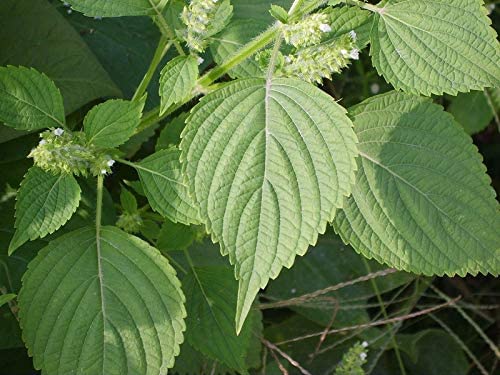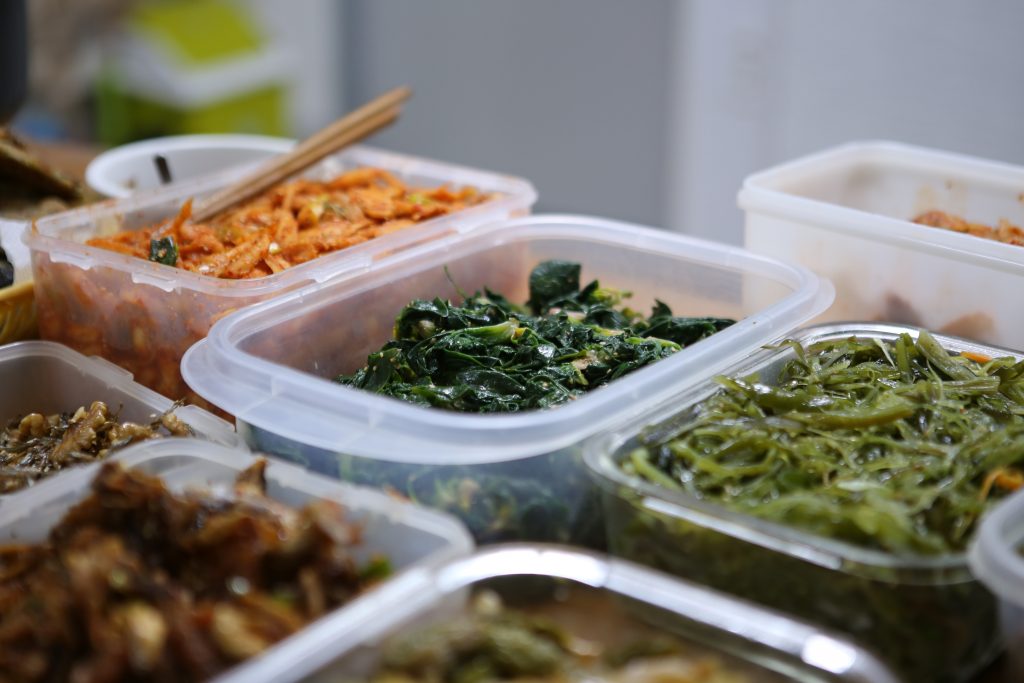Cooking with Perilla Leaves 101

While there are various ingredients we use to enhance the taste of our foods, herbs are the best way to take your cooking to the next level. They add a subtle yet incredibly delicious layer to any dish and make it seem well-thought-out.
Different herbs are preferred throughout the various global cuisines. Italian cuisine prefers oregano and basil, French cuisine adores thyme, and south Asian cuisines add coriander.
Perilla leaves are an incredibly popular herb added to Asian cuisine, and most prominently, Korean cuisine. It belongs to the mint family and has a unique taste that can elevate any dish.
If you’re interested in learning more about this wondrous little herb, keep reading below.
We independently research, test, and recommend the best products just for you. In order to keep this site going, we may receive commissions on some of the purchases made from the links below.
What are Perilla Leaves?

Perilla is the term used for various species of plants in the mint family. The Perilla plant, commonly called Korean Perilla, is the species of Perilla in the mint family.
Perilla is also known by its Japanese name ‘egoma’ or ‘shiso.’ It’s originally from the mountainous regions of China, India, and South Asia.
More popularly grown in Korea and China, farmers introduced this plant into Japan, leading to their variety, called ‘shiso.’
Now, you can easily get it worldwide.
The Perilla plant grows to 150 cm tall. Useful parts of the plant are its leaves and seeds, and it has an aromatic strong mint-like smell.
The Perilla leaves are oval-shaped with pointy ends. Furthermore, the leaves are generally green with light flecks of purple on the underside.
What are they used for?
Chinese doctors use Perilla leaves to treat many ailments. Furthermore, Asians use it widely in cooking as a garnish and as an antidote for food poisoning.
People also use Perilla leaves in Japan as a garnish on raw fish dishes for a dual purpose. Not only does it help flavour the dish, but it also helps prevent possible poisoning owing to the rawness of the fish.
Its seeds yield edible oil, which you can use in commercial manufacturing processes to produce varnishes, dyes, and inks.
Fresh green Perilla leaves are popular in Korean cuisine. Perilla is possibly safe for most people when taken by mouth, but sometimes it can cause an allergic skin reaction and rash.
As you can see, the Perilla plant is multi-purpose and popular throughout various industries.

3 Health Benefits of Perillia Leaves
These are just a few of the health benefits that come with using Perilla leaves in your diet.
Medicinal use
Doctors widely use the Perilla herb and the leaves and even the seeds to make medicines. Perilla can help treat many health issues like asthma, nausea, sunstroke, and sweating and reduce muscle spasms.
It is widely applicable as a herb in traditional Chinese medicine. Its various antioxidant properties help boost its medicinal use.
Anti-depressant properties
Perilla is an important constituent of anti-depression medicines. Some researches show that the bioactive constituent of Perilla frutescence, such as rosmarinic acid and apigenin, have an anti-depression effect.
Consuming small amounts of the herb can thus help you keep mood disorders at bay.
High in antioxidants
Perilla seeds were reported to have a higher amount of antioxidants than chia seeds and flax seeds. Additionally, Perilla leaves are rich in fibre and minerals.
Perilla leaves are also a rich source of carotenoids; Perilla’s entire plant is very useful and nutritious as it contains fat, protein, vitamins, and minerals.
Perilla Substitutes
As you know, Korean Perilla leaves are part of the mint family to use mint leaves as substitutes. You can also use shiso as a Perilla substitute, but the taste isn’t entirely similar.

FAQs on Perillia Leaves
Is Perilla sesame?
Sesame and Perilla plants are sometimes both called sesame, but they are different plants. You can use both plants to make oil, namely Perilla oil and sesame oil.
The aroma of both oils is slightly different, but they smell like sesame.
What do Perilla leaves taste like?
Perilla leaves and seeds belong to the mint family and have a minty liquorice taste with an additional nutty flavour. Its texture is slightly fuzzy, and these leaves are soft, tender, and have a very grassy texture.
What is Perilla leaf good for?
Perilla leaf is a traditional aromatic herb that originated as a wild species of the mint family.
Perilla leaf extracts are rich in antioxidants and have anti-allergic, anti-inflammatory, anti-depressant, and tumour-preventing properties.
The Perilla leaf also has protective properties which help you keep food poisoning from raw meat at bay. This makes it a common ingredient in sushi and sashimi where most of the meat is raw.
It also helps keep the smell of uncooked seafood at bay.
You can apply the juice from Perilla leaves to wounds and cuts because of its anti-bacterial properties. Perilla leaves are also used in the preparation of herbal tea for cold and fever.
Furthermore, the Perilla leaf is an excellent way to add a minty, nutty taste to any dish. If you’re wondering how to grow Perilla leaves, you can easily do so in well-drained soil.
Can you eat Perilla leaves Raw?
You can use Perilla leaves in both ways, either raw or cooked. However, make sure to rinse it clean of any dirt before consuming it raw.
Raw Perilla leaves feature widely in salads, and in Korea, they use the leaves in kimchi. The Perilla leaves are marinated for an extended period with soy sauce, herbs, and spices.
You can also freeze Perilla leaves in the fridge, and you can thaw them before using them for cooking.
What can I use instead of Perilla leaves?
You can use mint leaves and Thai basil, which also belong to the mint family.
Is Perilla mint poisonous to humans?
Perilla mint plant is toxic, and the flowers are the most dangerous. Perilla flowers can cause respiratory distress syndrome.
The Perilla plant has ketones that can damage the lungs through inflammation. It can also prevent the adequate exchange of gases.
However, the plant is toxic only if you consume it in a high quantity.
Conclusion
There are plenty of herbs around the world; some are truly useful and beneficial. Every herb and plant has its properties.
The Perilla plant has a unique taste that can brighten up any dish. It also has a host of medicinal properties, which make it a healthy addition to any meal.
If you want to add more complexity to your food, this herb is a must-try.

Andy
Ever since I started cooking I’ve been fascinated by how different people’s techniques are and how they best utilise the ingredients around them. Even the person living next door will have their own unique way of frying an egg or cooking a salmon fillet.
This fascination led me on a journey across the globe to discover the countless practices and traditions the world of cooking has to offer. I thought you’d enjoy and find value in sharing that journey with me so I created Cooked Best!